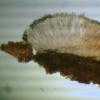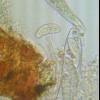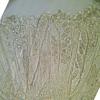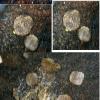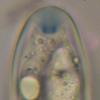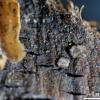
18-12-2025 17:23
 Bruno Coué
Bruno Coué
Bonjour,je serais heureux d'avoir votre avis sur c

18-12-2025 21:17
Pol DebaenstThe identification took me to Byssonectria deformi

18-12-2025 18:07
Margot en Geert VullingsThese plumes were found on rotten wood.They strong

17-12-2025 18:35
 Michel Hairaud
Michel Hairaud
Bonjour à tous/Hi to everyone I am passing along

15-12-2025 15:48
 Danny Newman
Danny Newman
Melanospora cf. lagenaria on old, rotting, fallen

15-12-2025 15:54
 Johan Boonefaes
Johan Boonefaes
Unknown anamorph found on the ground in coastal sa

15-12-2025 21:11
 Hardware Tony
Hardware Tony
Small clavate hairs, negative croziers and IKI bb

15-12-2025 07:09
 Danny Newman
Danny Newman
indet. Rutstroemiaceae sp. on unk. fallen leavesMc
Asco on Salix
Perz Piotr,
19-10-2007 02:12
this is Pezicula-like fungus on bark of Salix, growing under Periderms, breaking off the bark (like Pezicula, but not in clusters).
Sorry, I have no good Makros :(
Perz Piotr,
19-10-2007 02:21
Perz Piotr,
19-10-2007 02:22
Re:Asco on Salix
Here is ZIP-file with all my Micros of this species: http://wwkk.mikologia.pl/temporary/ascofrance/20071003-001%20Pezicula%20cf.zip
Hans-Otto Baral,
19-10-2007 17:20

Re:Asco on Salix
Hi Piotr
when I look at the marginal excipulum of t. porrecta, with very short, irregularly curved smooth hairs, I see some similarities with Calycellina ochracea, a species which I put close to Rodwayella. However, these fungi around Rodwayella have very striking yellowish VB-guttules in paraphyses and hairs, while yours appears to be devoid of these. Also the apical ring reacting only in its lower part looks different.
I suggest a relation to Hyaloscypha s.l., but have no idea what species this is.
How large are the spores? Perhaps I find something in my database. Probably this is a xerotolerant fungus and therefore perhaps one of those many undescribed ....
Zotto
when I look at the marginal excipulum of t. porrecta, with very short, irregularly curved smooth hairs, I see some similarities with Calycellina ochracea, a species which I put close to Rodwayella. However, these fungi around Rodwayella have very striking yellowish VB-guttules in paraphyses and hairs, while yours appears to be devoid of these. Also the apical ring reacting only in its lower part looks different.
I suggest a relation to Hyaloscypha s.l., but have no idea what species this is.
How large are the spores? Perhaps I find something in my database. Probably this is a xerotolerant fungus and therefore perhaps one of those many undescribed ....
Zotto
Perz Piotr,
20-10-2007 01:08
Re:Asco on Salix
Perz Piotr,
20-10-2007 13:14
Hans-Otto Baral,
20-10-2007 18:51

Re:Asco on Salix
Hoi Piotr yes, now I see it more clearly, forget my previous suggestion. The fungus seems erumpent, and I suggest you to compare my genus Amylopropolis nom. prov. (in directory "Rhytismatales, propoloid fungi"). Would that be a better choice ? :-) This Amylopropolis is, however, a Macaronesian collection... And it does not seem to form longisepta in the spores which I found consistently with 7 cross septa. Zotto
Perz Piotr,
20-10-2007 19:04
Re:Asco on Salix
OK Zotto,
that was also my sugestion, see below (le 19/10/2007 à 02:21). It can be a next species in this genus, cause is seems to be very close to this fund from Croatia.
Tschüss!
Pimpek
that was also my sugestion, see below (le 19/10/2007 à 02:21). It can be a next species in this genus, cause is seems to be very close to this fund from Croatia.
Tschüss!
Pimpek
Hans-Otto Baral,
20-10-2007 22:26

Re:Asco on Salix
Hey, sorry, I must have overlooked your line above the macrophoto. Wonderful that we finally arrive at the same result!
This unpublished genus (if a separate genus at all) is very interesting because it undoubtedly represents a close relative of Propolis and Melittosporiella, but is, to my knowledge, the first report of a Rhytismatalean fungus with amyloid asci, as far as placement of the propoloid fungi within that order is supported, but at least it seems to be the first record of amyloid asci within the propoloid fungi.
Zotto
This unpublished genus (if a separate genus at all) is very interesting because it undoubtedly represents a close relative of Propolis and Melittosporiella, but is, to my knowledge, the first report of a Rhytismatalean fungus with amyloid asci, as far as placement of the propoloid fungi within that order is supported, but at least it seems to be the first record of amyloid asci within the propoloid fungi.
Zotto


